India is a vast and diverse country with a history dating back to 5000 years. The glorious past has ensured that now India has plenty of UNESCO World Heritage Sites. The fascinating monuments and heritage sites in India stand quietly today to retell their story of joy, sorrow, courage and sacrifice before the visitors. India’s glorious past and cultural diversity make a potent blend which attracts millions of tourists each year to its heritage tourist attractions. India’s rich heritage is amply reflected in the various temples, palaces, monuments, and forts that can be found throughout the country.
Trawell.in presents most popular UNESCO World Heritage Sites in India.
Khajuraho, Madhya Pradesh
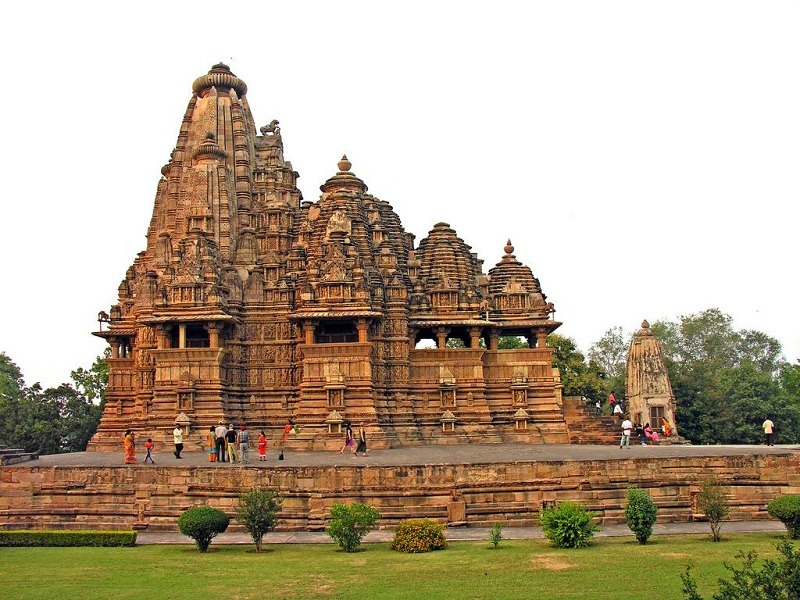
Khajuraho is an ancient city located in Chhatarpur district of Madhya Pradesh and is well known all over the world for its beautiful temples. The Khajuraho Group of Monuments has been listed as a UNESCO World Heritage Site, and one of the top places to visit near Kanpur. Khajuraho temples are famous for their nagara-style architecture, grand structures and their erotic sculptures. The stone carvings of human and animal form in erotic poses are very aesthetically portrayed and stand testimony to the rich cultural heritage of India. Temples in Khajuraho are divided into various groups such as the Western group and Southern group. It consists of total 85 Temples spread across an area of 20 sq. km. Most of these monuments were built between 950 to 1050 CE under the reign of the Chandella dynasty. Kandriya Mahadevi, Chausth Yogini, Brahma, Lalgun Mahadev, Matangeshwar, Varaha, Lakshman, Parshwanath, Chaturbhuja, Ghantai, Vishwanath, Devi Jagdambi, Chitragupta, Vaman, Adinath and Duladev are the must-include places in Khajuraho tour packages.
Book Here : Khajuraho Tour from Kanpur
Nalanda, Bihar

Nalanda, an ancient seat of learning, is located about 90 km from Patna in Bihar. Built in the 5th century AD, the ruins of Nalanda is said to be one of the world’s oldest universities. Nalanda flourished under the patronage of the Gupta Empire in the 5th and 6th centuries and later under Harsha, the emperor of Kannauj. At its peak, the university had learning centers, monasteries, and a gigantic library that attracted students from far and wide. The ancient varsity’s end came in 12th century AD when it was ransacked, looted and burnt by the Turk Army led by its commander Bakhtiar Khilji. Nalanda is the second world heritage site recognised by UNESCO in Bihar after Bodh Gaya, and among the best heritage places to visit near Patna. The ruins of Nalanda are spread over an area of 14 hectares. Stupa of Sariputta, Hiuen Tsang Memorial Hall, Surya Temple, Nalanda Museum and Nav Nalanda Vihar are some of the must-include places in Nalanda tour packages. The Stupa of Sariputta is built in the shape of a pyramid, and is a structure that towers over the entire complex.
Book Here : Nalanda Pilgrimage Tour
Most Popular Heritage Tours
Agra, Uttar Pradesh

Agra, the land of the Taj Mahal, is situated on the banks of River Yamuna in the state of Uttar Pradesh, India. Agra is one of the most popular tourist destinations of the World and also one of the best Places to visit near Delhi. Agra is included on the Golden Triangle Tour circuit, along with Delhi and Jaipur. The city houses many ancient temples, mosques, forts, mausoleums, tombs and historical monuments. The Taj Mahal, one of the Seven Wonders of the World, is an immense mausoleum of white marble, built between 1632 and 1653 by order of the Mughal emperor Shah Jahan in memory of his favorite wife Mumtaz Begum. It is considered as the best example of Mughal architecture worldwide and is called the “Jewel of Muslim Art in India”. Apart from the Taj Mahal, Agra Fort, Akbar’s Tomb-Sikandra, Mariam-uz-Zamani Tomb, and Jama Masjid are the other important tourist attractions that are visited as part of Agra packages.
Book Here : Agra Tour from Delhi
Hampi, Karnataka

Hampi is an ancient city situated on the banks of Tungabhadra River in northern Karnataka. Renowned as UNESCO World Heritage Site, Hampi is one of the most popular heritage sites in Karnataka and also one of the must see attractions not to miss in a South India holiday packages. Hampi was the capital of Vijayanagara Empire and was an extremely important part of the Empire from 1343 CE to 1565 CE. The ruins of Vijayanagara Empire are spread over an area of more than 26 sq. km in & around Hampi. The ruins at Hampi are a collection of heritage sites depicting the fine Dravidian style of art and architecture. The place is a significant religious center of the Vijayanagara Empire due to the presence of the historic Virupaaksha Temple along with many other monuments of the old city. The famous Vittala Temple is located 2 km east of the Hampi Bazaar. Krishna Temple complex, Narasimha, Ganesha, Hemakuta Hill temples, Achyutaraya Temple, Pattabhirama Temple, Royal Enclosure and Zenana Enclosure are the some popular places to be visited as a part of Hampi 2 day tour.
Also Read: Hampi Tour from Bangalore
Hill Forts of Rajasthan
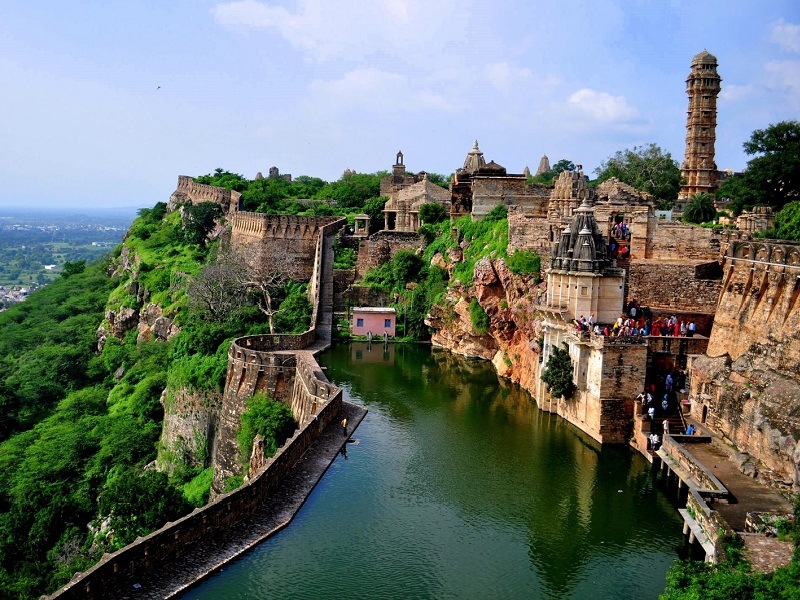
Rajasthan, also known as the Land of Kings, is one of the biggest states in India. Formerly known as Rajputana, Rajasthan was divided into various regions, which were ruled by various clans which include Meenas, Gurjars, Rajputs and Jats which were responsible for the building of various hill forts & historical monuments which in turn provided the rich cultural heritage found in the state. The most popular Tourist Places in Rajasthan are various hill forts, mostly based in the Aravalli Mountain Range, and built between the 5th century AD and 17th – 18th century AD. The most impressive are the six majestic forts in Chittorgarh, Kumbhalgarh, Ramthambore, Gagron, Amber and Jaisalmer, which are all listed by UNESCO as World Heritage Sites. The sheer length and expanse of the forts is enough to portray the power and strength of the Rajputana rulers and chieftains. The fortifications of these forts are extremely strong. These forts contain huge water harvesting structures or pools that are still used today. The stunning art works and decorations of these forts captivate the attention of the tourists as part of Rajasthan tour packages.
Book Here: Rajasthan Luxury Packages
Churches of Goa

Goa is India’s smallest state located in the Konkan region and is one of the most popular tourist places in India. Renowned for its beaches, churches and world heritage architecture, Goa is visited by large numbers of international and domestic tourists each year. The churches & convents located in Goa Velha (or Old Goa) have been declared a World Heritage Site in 1986. Goa was capital of Portuguese India and Asia and an evangelization center from the sixteenth century. The famous churches in Goa stand testimony to the grand past of the fun capital of India. The distinct influence of the Portuguese architecture in these churches is simply amazing. Monumental in stature, these structures are of religious, cultural and historical significance. Basilica of Bom Jesus, Se Cathedral, Church of Our Lady of the Immaculate Conception, St. Cajetan Church, Church of St Francis of Assisi, Our Lady of the Mount, and Ruins of the Church of St. Augustine are the top places to visit in Goa as part of Goa 3 day tour and Goa 4 day trip. Other than the churches, one can also visit popular Goa beaches like Colva Beach, Baga Beach, Calangute Beach, Anjuna Beach, and Vagator Beach during their Goa Tour.
Also Read : Goa Honeymoon Packages
Ajanta & Ellora, Maharashtra

Ajanta and Ellora Caves near Aurangabad are rock cut Buddhist caves that date back as far as the 2nd century BC to 10th century AD. These UNESCO World Heritage Sites are the most visited heritage sites in Maharashtra and are often used to promote Maharashtra Tourism. The Ajanta Caves mainly consist of rock cut monuments dedicated to the ancient Buddhist traditions, while Ellora Caves contain Hindu, Buddhist and Jain monuments built during the Rashtrakuta Empire. Ajanta & Ellora are the popular tourist places to visit near Mumbai and among the best 2 day trip from Mumbai.
The Ellora Cave Complex comprises of 34 caves that were hewn out of solid rocks of the Charanandri hills. The Ellora complex includes 12 Buddhist, 17 Hindu and 5 Jain Caves. The central attraction at Ellora is Kailash Temple (Cave16), which is the most remarkable. Ajanta Caves are excavated in a horse-shoe shaped bend of rock surface overlooking the Waghur River. The complex consists of 29 rock-cut cave monuments built in two distinct periods. Though all the caves are interesting to watch, Cave 1, 2, 16, 17, 19 and 26 are must see attractions you must include in Ajanta packages. The caves at Ajanta are famous for beautiful mural paintings and sculptures that depict tales of Jatakas.
Book Here : Ajanta Tour from Aurangabad
Sanchi, Madhya Pradesh

Sanchi is one of the top places to visit near Bhopal and it has a remarkable specimen of Buddhist art and architecture from 3rd century BC to 12th century AD. Sanchi is famous for stupas, monolithic Asokan pillar, temples, monasteries and sculptural wealth. The Stupas of Sanchi were constructed on the orders of Emperor Asoka to preserve and spread the Buddhist philosophy. It remained a major pilgrimage site for the Buddhists till about 12th century AD, after which the religion declined in popularity. The monuments at Sanchi are recognized as UNESCO Heritage Site.
The Great Stupa at Sanchi is the oldest stone structure in India and was originally commissioned by the Emperor Ashoka in the 3rd century BCE. Its nucleus was a simple hemispherical brick structure built over the relics of the Buddha. It comprises of a semi-spherical dome, circumambulatory pathways called Pradakshinapatha along with pillared structured gateways called Toranas, which has sculptures from Jataka stories, previous births of Buddha and his life events. Various styles, stone carvings and narrative art depiction through stories are the highlights of Sanchi Stupa. The Stupa was vandalized during 2nd century BCE and renovated during the Satavahana Period when the gateways and the balustrade were built and colored. Apart from Sanchi Stupa, several other structures that one must visit as part of Sanchi tour packages are monolithic pillars, temples, palaces and monasteries.
Book Here : Sanchi Tour from Bhopal
Delhi
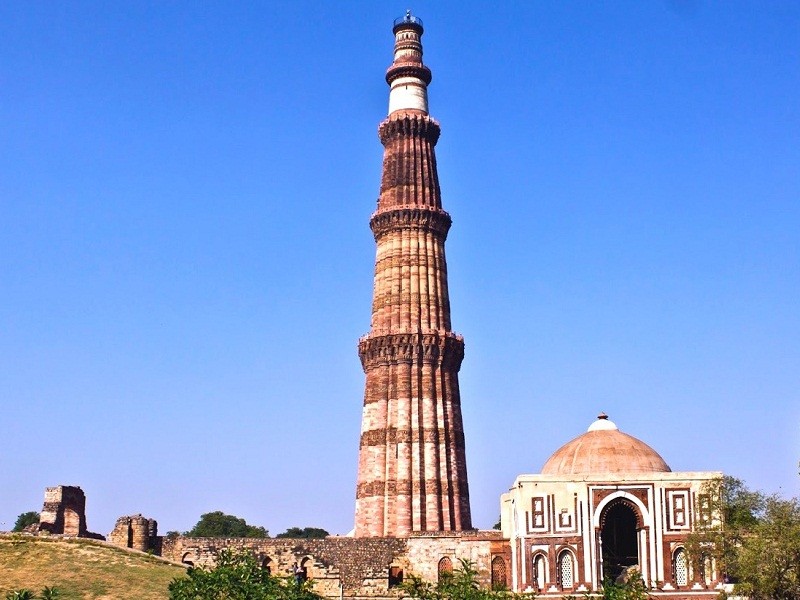
Delhi, the capital city of India, is one of the oldest cities in India and also one of the fastest growing cities in the world. Historically, the city was known as Indraprastha or Hastinapura, the renowned capital of the legendary Pandavas, which has overwhelming history and rich cultural heritage. The city of Delhi has seen the birth and death of many kings, kingdoms and dynasties. With the rise of each dynasty, Delhi was beautified by fascinating architecture that has withstood the ravages of time.
Delhi serves as one of the best tourist places in India and also one of the top Honeymoon places in India. Delhi is visited by large number of tourists as part of Golden Triangle tour packages. During the Mughal rule, a number of majestic monuments were constructed by Mughal kings to display the pomp and splendor of the Mughal Empire. Today these monuments have become popular heritage places of attractions in Delhi. Red Fort, Jama Masjid, Purana Quila, India Gate, Qutub Minar, Lodi Gardens, Jantar Mantar, Humayun Tomb, Safdarjung’s Tomb and Rashtrapati Bhavan are the popular historical places to visit in Delhi as part of Delhi 2 day trip and Delhi 3 day tour.
Also Read : Delhi Leisure Tours
Western Ghats

The Western Ghats is a mountain range that covers an area of 160,000 sq. km in a stretch of 1,600 km parallel to the western coast of the Indian peninsula, traversing the states of Kerala, Tamil Nadu, Karnataka, Goa, Maharashtra, and Gujarat. UNESCO’s World Heritage Committee inscribed the Western Ghats of India as a world heritage site on 1st July 2012. It comprises a total of 39 properties including national parks, wildlife sanctuaries, and reserve forests– twenty in the state of Kerala, ten in Karnataka, five in Tamil Nadu, and four in Maharashtra. The decision will ensure the mountain range gets international support for the conservation of biological diversity, besides containing areas of high geological, cultural, and aesthetic values.
Older than the Himalayas, the mountain chain of the Western Ghats influence Indian monsoon weather patterns by intercepting the rain-laden monsoon winds that sweep in from the south-west during late summer. Besides, it is one of the ten hottest biodiversity hotspots in the world as it has over 7,402 species of flowering plants, 1,814 species of non-flowering plants, 139 mammal species, 508 bird species, 179 amphibian species, 6,000 insects species, and 290 freshwater fish species. The Western Ghats are home to at least 325 globally threatened species.
Konark Sun Temple, Odisha
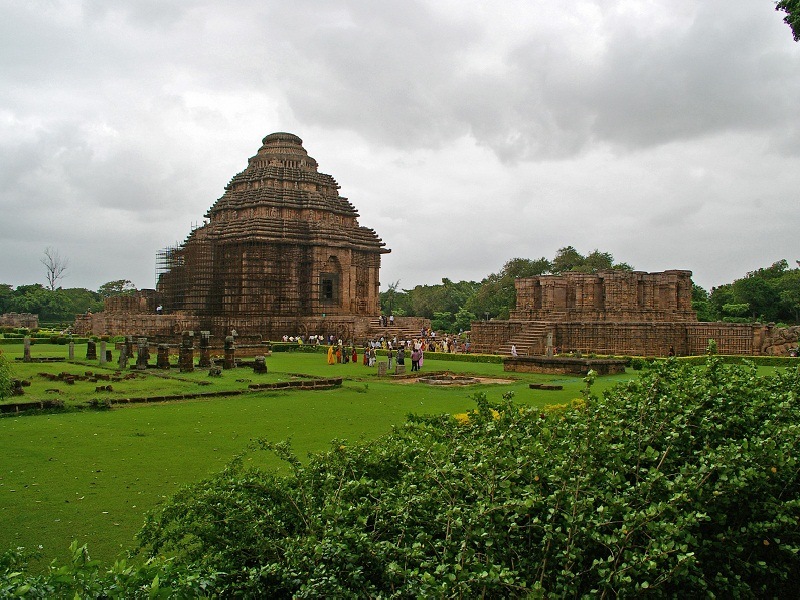
The Konark Sun Temple is the most popular tourist places to visit as part of Odisha tour packages and has been a World Heritage Site since 1984. It is located in the village of Konark, which is 35 km north of Puri on the coast of the Bay of Bengal. This temple is one of the grandest temples of India and was referred to as the Black Pagoda. The Konark Sun Temple, dedicated to the sun god, was built by king Narasimhadeva I of the Eastern Ganga Dynasty in around 1250 AD. The temple reflects the grandeur of the traditional style of Kalinga Architecture.
Regarded as one of the most prominent places to visit near Bhubaneshwar, the temple is originally said to be built at the mouth of river Chandrabhaga but the waterline receded since then. The temple is designed in the shape of a chariot that is pulled by seven horses on 24 wheels, carrying the sun god to the heavens. It is carefully oriented towards the east so that the first rays of sunrise strikes the principal entrance. Built from Khondalite rocks, the temple is also known for its erotic sculptures of maithunas. A major part of the structure is now lie in ruins, however, the temple is still amongst the fine specimens of architecture in India.
Book Here : Konark Tour from Bhubaneshwar
Chola Temples in Tamil Nadu
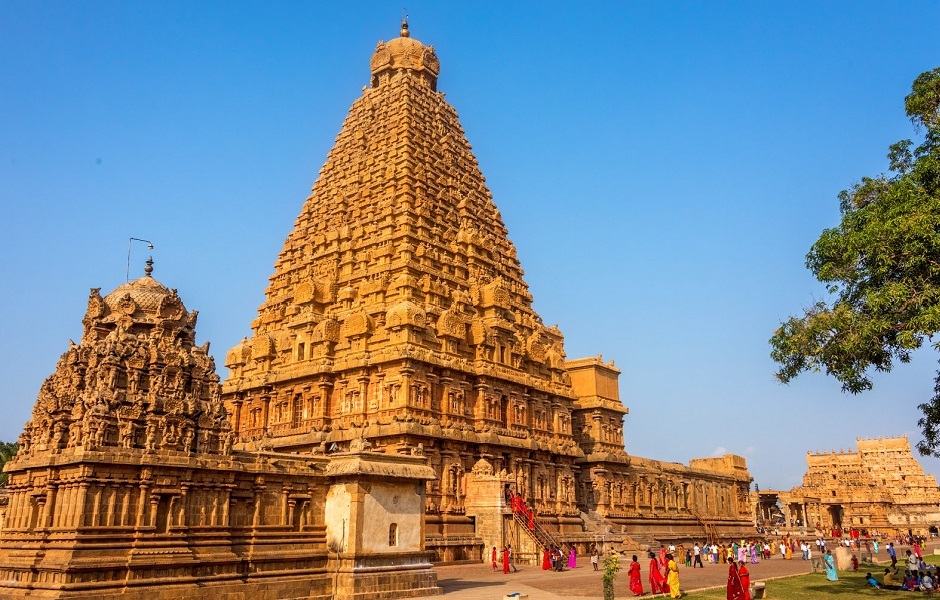
The Great Living Chola Temples were built in Southern Part of India during the rule of Chola Empire. It comprise of three temples; the Brihadeeswarar Temple at Thanjavur, the Temple of Gangaikonda Cholapuram and the Airavatesvara Temple at Darasuram. These are the must visit temples in Tamilnadu which can be visited as part of Tamilnadu Tour Packages. Built during the 11th and 12th centuries by the kings of the Chola dynasty, these temples stand testimony to the architectural splendor and beauty of Chola art, architecture and sculpture. The Brihadeeswarar Temple was declared by UNESCO as a World Heritage Site in 1987. The temple of Gangaikonda Cholapuram and the Airavatesvara Temple at Darasuram were added as extensions to the site in 2004.
The most ambitious of the Chola temples, Brihadeeswarar Temple in Thanjavur was built for King Raja Raja Chola I and even today is one of the most visited temples in Tamil Nadu, and among the must-include places in Thanjavur 2 day tour. With its grand design and magnificence, it added to the architectural splendor of the Chola capital. The temple at Gangaikonda Cholapuram was patronized by Rajendra 1 and was dedicated to Lord Shiva. The Airavatesvara Temple was built during the time of Raja Raja II, and is aesthetically different from the other two. These temples are living temples and the rituals and festivities are still held.
Book Here : Thanjavur Tour from Madurai
Fatehpur Sikri, Uttar Pradesh

Fatehpur Sikri is a deserted fort city in the Agra district of Uttar Pradesh, India. UNESCO declared this complex as a World Heritage Site in 1986. It is one of the best heritage sites in India and among the popular places to visit near Agra and also among ideal weekend getaway from Delhi. Akbar, the greatest Mughal Emperor, was commissioned Fatehpur Sikri in 1569 AD. The city was constructed to honour Sufi saint, Sheikh Salim Chisti, who used to live in a cavern on the ridge at Sikri. This city served as the capital of the Mughal Empire from 1571 till 1585 AD. Fatehpur Sikri is one of the best preserved collections of Indian Mughal architecture. The complex was built with an amalgamation of Indian, Persian and Islamic architecture. The city is bounded on three sides by a 6 km long wall, which is fortified by towers and has seven gates. It consists of beautiful palaces, halls, and mosques. Jama masjid, Buland Darwaza, tomb of Sheikh Salim Chisti, Khas Mahal, Panch Mahal, Khwabgah, Diwan-i-Khas, Anup Talao and Diwan-i-Am are the popular places to visit in Fatehpur Sikri.
Book Here : Fatehpur Sikri Tour Packages from Delhi
Bodh Gaya, Bihar

Bodh Gaya is a religious place associated with the Mahabodhi Temple Complex in Gaya district of Bihar and is one of the UNESCO World Heritage sites in India, and among the most prominent places to visit near Patna. The place has a historic prominence as it is the place where Lord Buddha attained enlightenment under a Bodhi Tree. The famous Mahabodhi Temple was established during the reign of Ashoka the Great in 3rd century BC and it is one of the earliest Buddhist temples. The original structure of Mahabodhi Temple was completed in 7th century AD during the reign of Gupta kings. The temple underwent several restorations, renovations and repairs in subsequent period in which the Burmese greatly contributed.
The Mahabodhi Temple Complex comprises the 50 m tall Mahabodhi Temple, the Vajrasana, sacred Bodhi Tree and other six sacred sites of Buddha’s enlightenment. Owing to all these factors, Bodh Gaya is the most important of the main four pilgrimage sites related to the life of Gautama Buddha, the other three being Kushinagar, Lumbini, and Sarnath. Inside the temple, is the giant image of a seated Buddha depicting the supreme enlightenment.
Book Here : Bodhgaya Tour Packages
Hoysala Temples in Karnataka
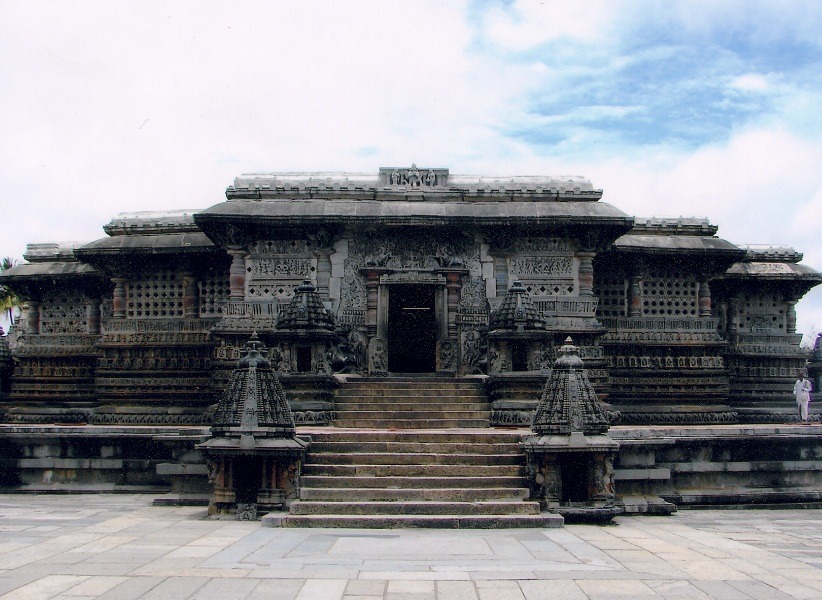
The Hoysala Empire was a prominent South Indian Kannada empire that ruled most of Karnataka between the 10th and the 14th centuries. The capital of the Hoysalas was initially located at Belur but was later moved to Halebidu, among the top places to visit in Karnataka. The Hoysala era was an important period in the development of art, architecture, and religion in South India. The empire is remembered today primarily for its temple architecture. Over a hundred surviving temples are scattered across Karnataka, the most prominent temples are Chennakesava Temple at Belur, the Hoysaleswara Temple at Halebidu, and the Kesava Temple at Somnathpur, among the most famous places to visit near Mysore.
The Hoysala temples are known for star shaped plat form, minute & intricate carvings and sculptures with metal like polishing. The Chennakesava Temple is one of the finest examples of Hoysala architecture and was built by king Vishnuvardhana in 1117 CE. The Hoysaleswara Temple, dedicated to Lord Shiva, is built by Ketumalla, a minister of Vishnuvardhana during 1121 AD. The walls of the temple are covered with an endless variety of depictions from Hindu mythology, animals, birds and dancing figures. Kesava Temple in Somnathpur was built in 1268 by Somnatha, a general of King Narasimha III. The temple is famous for its elaborate and intricate sculptures. The most characteristic feature of this temple is its 16 different ceilings, each depicting a different stage of a blooming plantain (banana flower).
Book Here : Belur Tour from Bangalore
Mahabalipuram, Tamil Nadu

Mahabalipuram (also called Mamallapuram) is situated in Kanchipuram district of Tamil Nadu. It is famous for its shore temples built in 7th century AD. This one of the major historical / heritage sites in Tamil Nadu and also one of the best places to experience Tamilnadu Tourism. This UNESCO World Heritage Site was the second capital of the Pallava kings of Kanchipuram. It is an ancient historic town and was a bustling seaport during Pallava kings in 7th century AD. It is known for its historical monuments, sculptures, scenic beauty, culture and tradition. Shore Temple, Arjuna Penance and Pancha Rathas are the must-include places in Mahabalipuram 2 day tour. The mandapas and the panch rathas are made from the granite rock face, while the famed Shore Temple, erected half a century later, is built as a structured temple with huge blocks of rocks following wonderful architecture. Six man-made caves in different stages of completion are also seen here during your Mahabalipuram tour.
Also Read: Places to visit near Chennai
Badami & Pattadakal, Karnataka
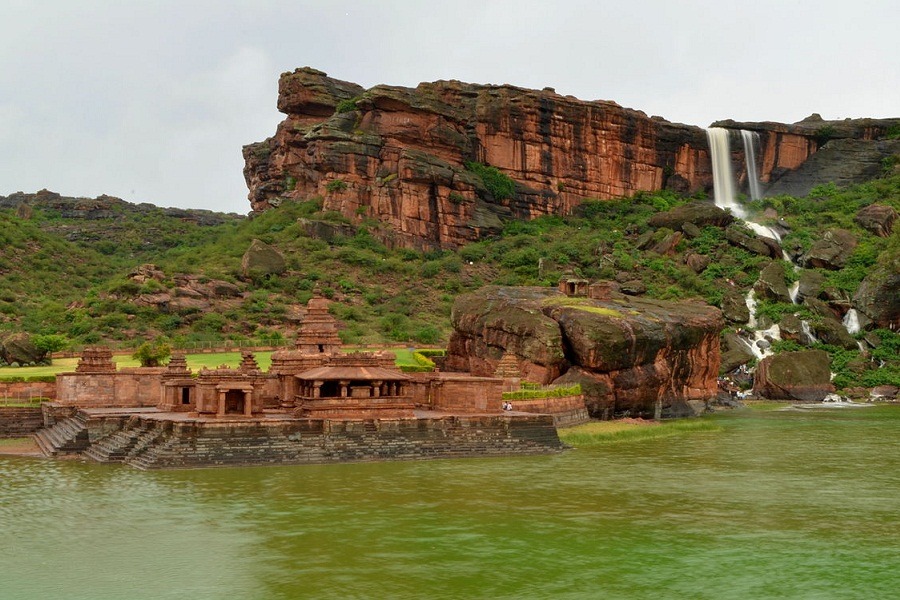
Badami, also called as Vatapi, was the capital of mighty Chalukyas from 540 to 757 AD who ruled Karnataka, Andhra Pradesh & Maharashtra between the 6th & 8th centuries. The Badami Chalukyas were exponents of early architectural achievements in Deccan. Aihole, Badami, and Pattadakal were their centers of art, and among the best places to visit near Bangalore for history buffs. Their style of architecture is called ‘Chalukyan architecture’. Badami is famous for cave temples, fortresses, fine carvings, wonderful architecture and breathtaking views. It is located in a valley at the foot of a red sandstone rock formation that surrounds Agastya Lake. Three of the cave temples belong to Vedic faith, the fourth cave is a Jain temple dedicated to Tirtankara Adinatha.
Pattadakal is a UNESCO World Heritage Site in Karnataka that must visit as part of Badami 3 day tour. It is famous for its Chalukya style of architecture that was originated in Aihole and blended with the Nagara and Dravidian styles of architecture. The Chalukyas built a series of nine Hindu temples, as well as a Jain sanctuary in Pattadakal. The important monuments are – Virupaksha Temple, Sangameshwara Temple, Chandrasekhar Temple, Mallikarjuna Temple, Kashivishwanaath Temple, Galganath Temple, Jain Temple and many more.
Book Here : Badami Tour from Bangalore
Mountain Railways of India
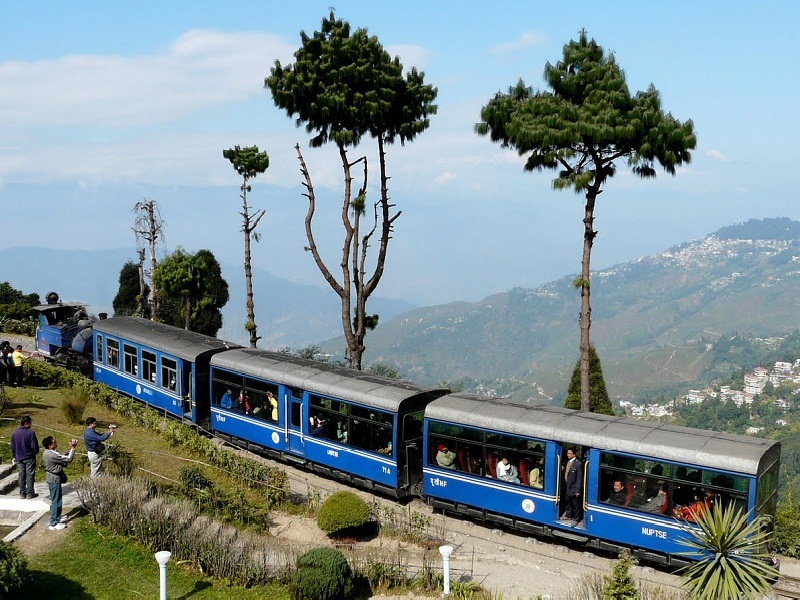
The Mountain Railways of India are outstanding examples of hill railways and are meter gauge railway lines operational around the hill regions. The British opened the railways between 1881 and 1908. These engineering marvels were a bold and ingenuous solution to the problem of connectivity in the rugged mountains. They are still fully operational as living examples of the engineering enterprise of the late 19th and early 20th centuries. UNESCO has recognized three hill railways in India as World Heritage Sites, which include Darjeeling Himalayan Railway, the Nilgiri Mountain Railway & the Kalka-Shimla Railway and grouping them as ‘Mountain Railways of India’.
The Darjeeling Himalayan Railway was the first opened in 1881, and is still the most outstanding example of a hill passenger railway. The construction of the Nilgiri Mountain Railway, a 46 km long meter-gauge single-track railway in Tamil Nadu was first proposed in 1854, but due to the difficulty of the mountainous location the work only started in 1891 and was completed in 1908. The Kalka–Shimla Railway was built in 1898 to connect Shimla, among the most popular Hill Stations near Delhi, with the rest of the Indian rail system.
Book Here : North-East India Tour Packages
Bishnupur Temples, West Bengal
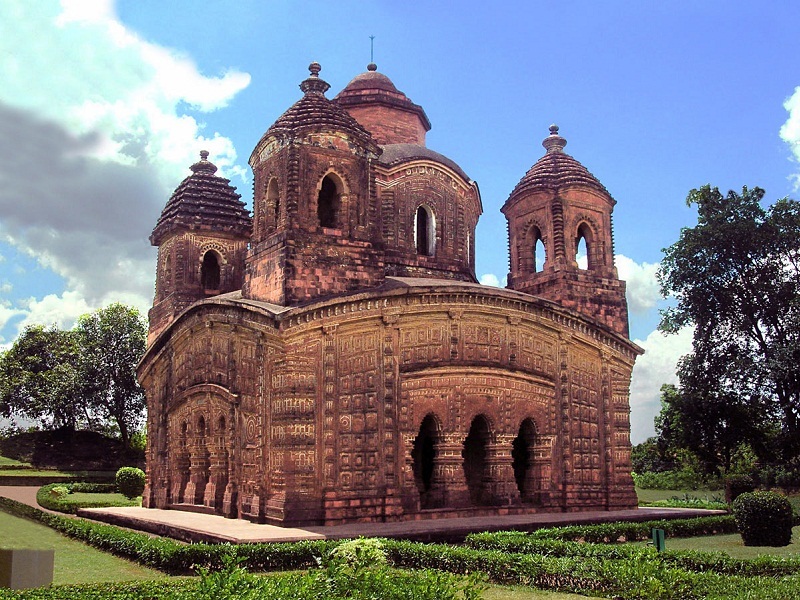
Bishnupur, the ancient Mallabhum, is a town located in the Bankura district of West Bengal. The town is famous for the terracotta temples made from the locally available laterite stones. The town has a glorious history that is reflected in its rich architecture, music and handicrafts such as pottery and weaving. The town prospered in the 17th and 18th centuries and was the capital of the Malla kingdom. One Raghunatha who gained distinction as Adi Malla is hailed to be the founder of Malla kingdom. However Bishnupur rose into prominence from the time of Bir Hambir, the most renowned of the Malla rulers.
Under the Malla kings, Bishnupur developed a unique form of architecture involving the most brilliant and detailed terracotta work. The Malla rulers were Vaishnavites and built the famous terracotta temples to celebrate their love for Lord Krishna. Crafted from local laterite and brick, the temples were covered with terracotta tiles depicting scenes from the epic Mahabharata and Ramayana. Among the many structures at Bishnupur, pyramidal Ras Mancha, Syama Raya, Jor Bangla, Radha Syama, Lalji, Krishna Balrama, Nikunjabihari and Kesaraya are the prominent ones.
Sundarban National Park, West Bengal

The Sundarban National Park is a National Park, Tiger Reserve, and a Biosphere Reserve in West Bengal, India. It is the largest estuarine mangrove forest in the world, and one of the largest and oldest national parks in India. Located on the Ganges Delta, this park shares its boundaries with Bangladesh. The present Sundarban National Park was declared as the core area of Sundarban Tiger Reserve in 1973 and a wildlife sanctuary in 1977. It was declared a National Park in 1984. It is a UNESCO World Heritage Site inscribed in 1987 and is considered as a World Network of Biosphere Reserve (Man and Biosphere Reserve) from 1989.
Encompasses 10,000 sq. km of land and water, Sundarbans is integral to the world’s largest delta of 80,000 km2 formed from sediments deposited by the three great rivers, the Ganges, the Brahmaputra, and the Meghna. The entire basin is traversed by a complex network of interconnecting waterways. Sundarbans is one of the largest reserves for the Bengal tiger, and it has the highest number of Bengal Tigers than any other park in the world. It is also home to a variety of bird, reptile, and invertebrate species, including the salt-water crocodile. The best way to explore the Sunderban is by a boat safari along the narrow channels of the rivers with mangroves on both the banks.
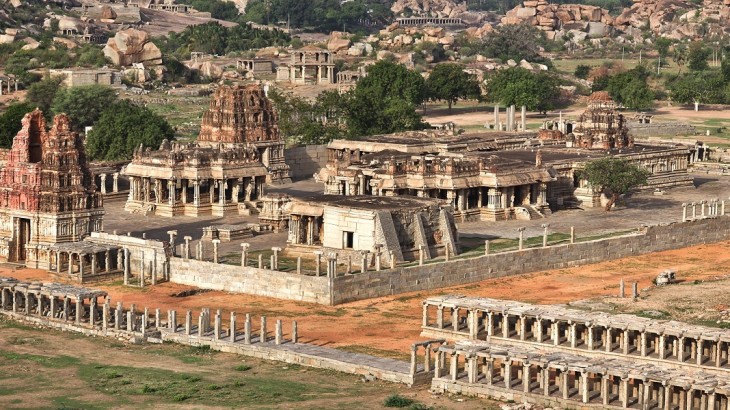







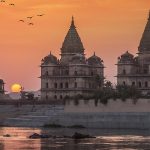



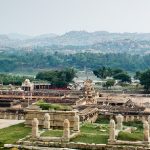



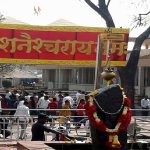



















14 thoughts on “20 Most Popular UNESCO World Heritage Sites in India”
Comments are closed.